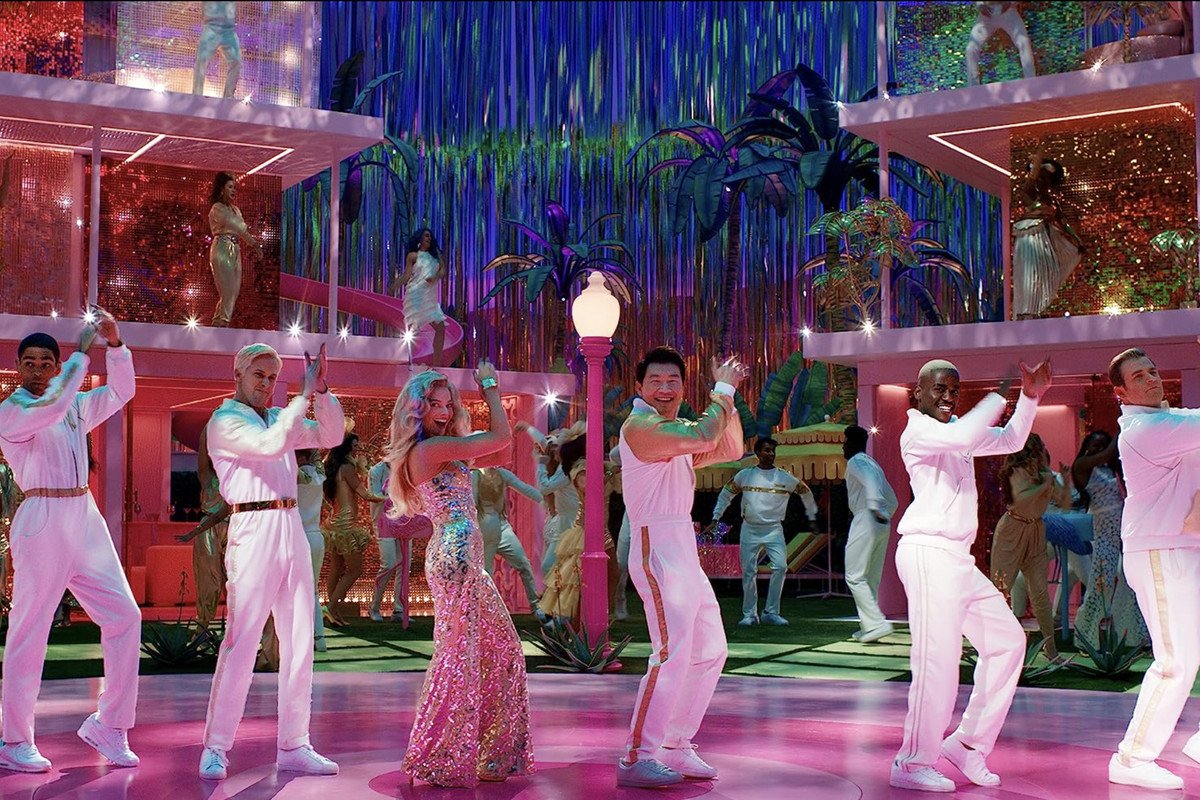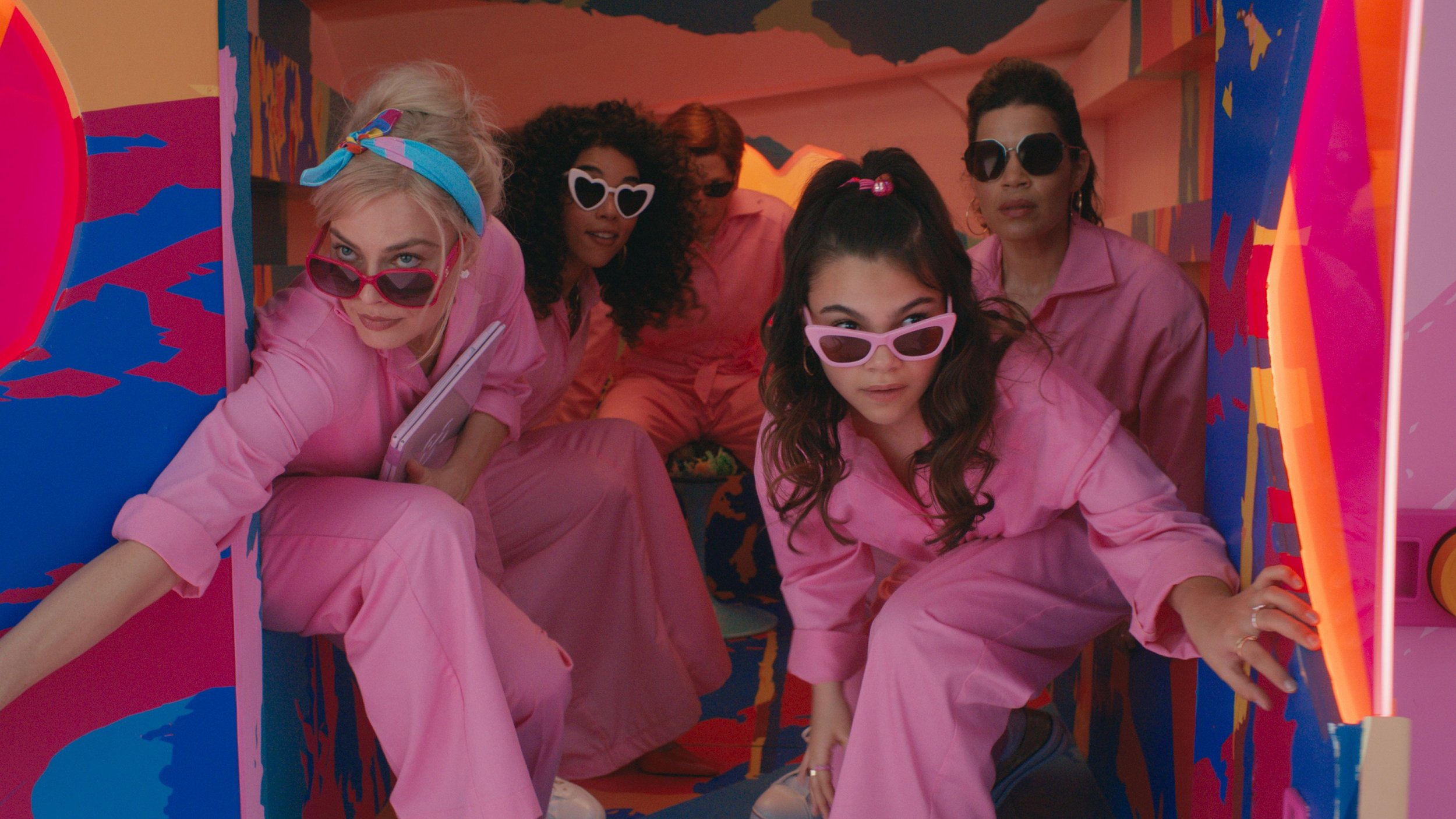Gerwig’s Barbie: A Ken out of Ken?
Kimberly Ler takes us on a whirlwind journey through summer’s blockbuster Barbie (2023), infused with witty and incisive commentary.
spoilers ahead.Introduction
Dubbed “Greta Gerwig’s The Lego Movie”, Barbie (2023) sure had lofty expectations to uphold. From the intricately designed sets and costumes to its multitudes of dance choreography, many people were looking forward to a modern Singing In The Rain (1952). Lest you forget, it’s a Gerwig. Of course, this film would expand on the complexity of womanhood and revitalise your hope in humanity. Now that I’ve hammered out a half-decent thesis, let’s talk shop. Chronologically, of course.
Opening Sequence
Having watched and rewatched the first Barbie teaser, this sequence of the film was one that I was well-prepared for. Capping it all off with an over-optimistic worldview that Barbie has vanquished gender inequality to segue into Barbieland? Smooth genius.
“Perfect Day”
Margot Robbie cements herself as the iconic spokesperson for a Stereotypical Barbie.
Giant Blowout Party
Gerwig and her team made an excellent choice in selecting pop queen Dua Lipa to head the film’s soundtrack. Dance The Night Away is fun, glittery, and stereotypical-Barbie. I regret to say this, but the dance choreography was not exceptionally stellar. Sure, everyone was dancing perfectly on cue and in position, but it wasn’t The Young Girls of Rochefort-fun. It lacked the oomph for me to want to learn the moves and recreate them in the most unflattering way possible.
The Beginning Of The End
Fatigue, cold showers, and podiatric problems bring us to Kate McKinnon’s Weird Barbie apartment. The design choice is definitely inspired. It’s the perfect level of abstraction you would expect a young child to piece together: a mish-mash of shapes and colours, with no respect to traditional form whatsoever. I love it. It’s deceptively difficult to recreate this aesthetic. Good job.
We get some sort of exposition about Barbieland and the Real World. It’s iffy and probably doesn’t stand too strong logically, but metaphysical rules aren’t a looming threat in this film, so we move on. The well-debated map featuring a rendition of the Nine-Dash line makes its brief appearance and we’re zooming our way past the pink gates of Barbieland. We know where we’re going, right?
The Real World
Touchdown in Venice Beach! Barbie on the boardwalk. I love that immediately, Barbie feels the threat posed by Men™. Gerwig scores another stellar portrayal of the universality of Womanhood™. Mirroring the differences in treatment towards Barbie and towards Ken so plainly, Gerwig begins Barbie’s heroine journey.
The Woman On The Bench
Barbie just got out of jail and now she’s lost on a bench. Forrest Gump vibes, perhaps? It’s the first time in her life that Stereotypical Barbie has seen old age. Yet, instead of being repulsed by it, as she was with cellulite, she is nice to the madam. It’s heartwarming and emotional as hell. Gerwig knows how much society detests women who are aged. More importantly, she uses this moment as a perfect example of female empowerment. Beauty isn’t a blueprint; it’s a feeling. It’s just wonderful, what Gerwig does in this scene. Makes me (almost) want to grow old.
The High School
The encounter between Sasha (Ariana Greenblatt) and Barbie is... iffy to say the least. Sasha’s got a few valid points, but to label Barbie as a fascist? Sasha, get yourself together and stop repeating ‘woke’ criticisms of Barbie. Stepping back, I also think this is a very well-executed response to the pointed criticisms of Barbie. Yes, Barbie is indeed all those bad things and so much more. It’s a rough ground to tread on.
The Mattel Office
Always a joy to see Connor Swindells on screen. The Board being composed completely of straight white men is nothing short of amazing. Having a POC woman as the admin? Wonderful depiction of corporate.
Will Ferrel as Mattel’s CEO waxes some soulless corporate bullshit to coax Barbie back into her box that — to nobody’s surprise – fails.
Barbie is on the run.
Back To Barbieland
Gloria, Sasha and Barbie head back to Barbieland, on a journey that undoubtedly appears to be more fun and exciting than the one she embarks on with Ken. It’s an unspeakable truth: any journey taken with one’s girlfriends surpasses any with a romantic (?) partner.
Kendom is in turmoil. Dudebros are chilling all over the place. What dystopian hell is this? It’s supposed to be a men’s fantasy? Wow! Subjugating women to subordinate positions of power and instilling a mindset to cement your control and influence over them? And men wonder why women are unhappy with society!!!
Barbie is enraged. Her home, it’s defiled. By a Ken.
He’s supposed to be the pillar of support to Barbie’s success. He read a couple of books written from a patriarchal perspective and his internal belief system has completely crumbled. Toxic masculinity takes over with no apparent struggle.
MONOLOGUE TIME
If there’s one thing you can count on in a Gerwig film, it’s a female rage monologue. Taking the baton from Saoirse Ronan, America Fererra as Gloria expresses her fatigue with the contradictory standards and expectations of womanhood. It’s much less poetic than Jo’s in Little Women (2019); here, it’s truly in-your-face messaging. If men still can’t understand the weariness associated with being a woman, I cannot help them.
Quiet female rage is on full show as Ferrera expounds the tightrope women have to walk throughout girlhood and womanhood. Straying a little away from the film, I love how Ferrera speaks about this in an interview with etalk. Women are expected to leave behind their childhood, but not men. How happy I am, to see others share the same aggravations as I. Yet, how disappointed I am, as society still lacks the maturity to dispel these ridiculous expectations.
Back to the monologue. It is important to me that people realise that this film is about the Barbies’ realising their inherent worth and capabilities that are in no way associated with a male partner. The essence of Barbie. Female autonomy. Over our appearance, our careers, our bodies.
The Plan
It's wacky and whimsical and Allan (Michael Cera) is there! It’s a perfect plan that takes advantage of the Kens’ biggest weakness: their pride. It’s also quite a tongue-in-cheek criticism of ‘alpha’ men, and how their inherent sense of worth is based upon the opinions of others. Perhaps the indoctrination was them projecting their insecurities onto the Barbies.
I’m Just Ken
As Barbie is off on hijinks with her friends, Ken devolves into an identity crisis. Kenergy abounds, and we go on a journey of self-pity. The main set is heavily inspired by the dream-in-a-dream sequence in Singin’ In The Rain and I love it so much. The ‘Kenough’ hoodie is a must-have, except that shipping costs almost as much as the jacket itself.
Wrapping Things Up
The Barbies take back the power and restore Barbieland to its former wondrous glory.
That single shot of Margot Robbie as she watches the rest of the Barbies celebrating in the Supreme Court really stuck with me. That moment of hesitation, of doubt before she allows herself to express joy in her circumstance. Might also be possible that she is realising the systemic flaws of the gender-based power structure in Barbieland.
Barbie is still conflicted about her ending when the corporate megaturds show up and compel her to stay in Barbieland, and proceed as if things had never been changed in the first place. Understandably, Barbie is dissatisfied, for how could any of what she had been through be undone?
A Pleasant Surprise
Ruth Handler? I knew the name Ruth sounded familiar! The background is starkly white, with a bunch of moving, ever-changing swaths of colour breathing life into the scene. It’s comforting. Barbie explains her dilemma.
Shots of trees and home videos of women, of all ages and colour flash in front of us, as we realise this is what humanity is.
Being a woman is complicated but it also abounds with joy. Gerwig continues her artistic portrayal of life and its bountiful opportunities from Little Women, in a more abstract form. It brings a sense of wonder and awe comparable to that I personally experienced during John Green’s The Anthropocene Reviewed and the Dead Poets’ Society (1989). Paired with Billie Eilish’s fragile voice floating in the background, the conversation acknowledges the complexities and difficulties of being human. How inherently human Barbie already is, so full of possibilities she can contain.
It left me speechless for a long moment. The only thing that broke me out of my reverie was goddamn Ice Spice.
Is This The End?
The underlying meaning of this scene is still unexplored. Barbara previously mentioned she has no lady parts, so why would she visit the gynaecologist? Leisurebyte is of the opinion that Gerwig is making a theological reference, that Barbara is now bound to a fate similar to Eve: undergo the trials of womanhood to fulfil her dream of becoming a human woman.
My take on this scene is that Barbara is finally coming to terms with her gender identity, so she is probably getting gender-affirming surgery. In a way, it destigmatises the concept of gender nonconformity. Gerwig intentionally leaves this scene ambiguous and absurd enough to keep our minds turning while coming to terms with the heavy themes of girlhood and sense of worth.














